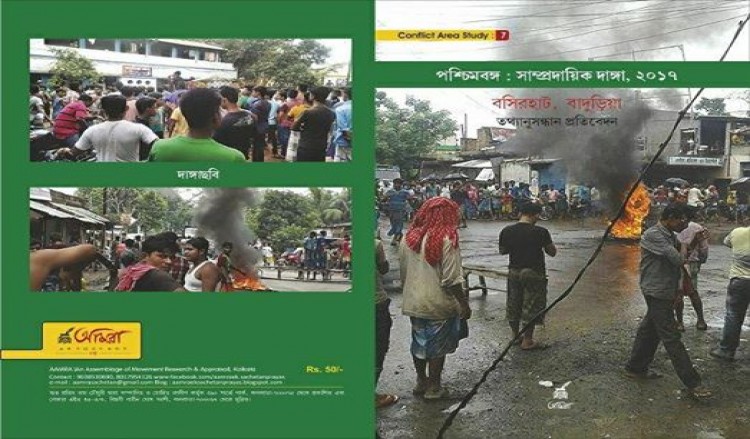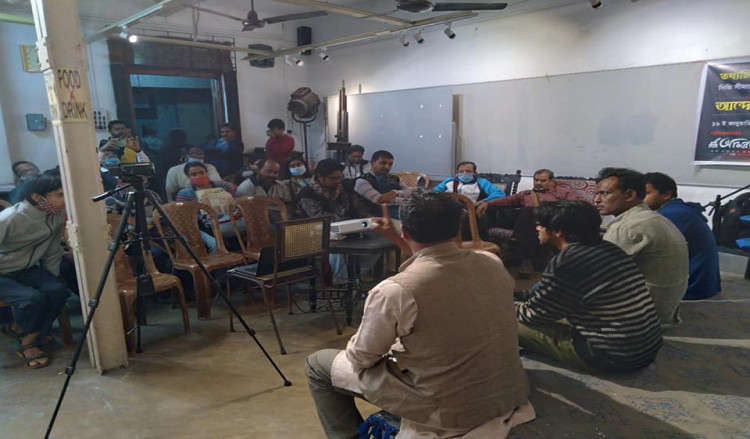
Farmer's Movement: Experience Sharing and Documentary Show, 16 January, 2021
AAMRA organised a program on contemporary farmer's movement of Delhi borders. Our team members stayed there for 7 days. Here is our reports on seminar and documentary show. We also inaugurated our fact-finding reports on Bhatpara and Telinipara communal violence.
Brief Report of ‘Andolone Annodata’ (Farmers in the way of Movement) Programme, 16.1.2021:
As you all well aware of the fact that Aamra Ek Sachetan Prayas Forum has been at the forefront in documenting the conflicts and coexistence since its inception, recent Farmers movement is seen as one of such rare opportunities to understand how diversities could unite and work at a synchronised way for a definite aim. A team of activists, researchers and documentary film-makers on behalf of our forum went to experience the spectacular Farmers' protest by being there. Our team members were Amitava Sen Gupta, Assistant Professor of Psychology; Faruque Ul Islam, renewed activist and photographer; Ipshita Chakroborty, psychological counsellor and Subhankar Sen Gupta, documentary-maker. On 16 January, 2021 we organized a programme to show some clippings and to share our experiences at Boi-chitor Auditorium, College Street, Kolkata. This programme was anchored by Suman Nath, Assistant Professor of Anthropology. Programme was started by an introductory on AAMRA by Subha Protim Roy Chowdhury.
As explained by Suman, our aim was not to extend any support, but to experience what considered by many as the most consistent, largest conglomeration of different farmers’ organisations to form a movement, perhaps one of its kind in its tenacity and peacefulness. Like the very nature of the movement itself AAMRA's engagement has been unsystematic and rather disorganised. It was never our attempt to unravel anything in its absoluteness, as we know it is impossibility, but this time what we could gather is only tiny bits of what is happening at Delhi border of Singhu, Gazipur, Tikri.
We all know the combination of three acts that lifts the ban on aggregation of essential commodities for future sale, opens up the potential for market participation in procuring the marketing farm produce and contract farming have resulted in severe protest among the farmers, especially those belonging to states like Punjab, and Haryana, which has experienced the benefits of green revolution. What AAMRA experienced in the protest site is rather unprecedented and has a potential to bring about a paradigm shift in the very definition of social movement in near future.
Team member Amitava spoke about the carnivalasque in the protest site. He argues that it the community feeling and agriculture linked way of life which is being replicated in the protest site. Younger people are washing off the tired feet of the elders, giving them a soothing massage. Langars are working day and night, caste relations are also reproduced but in an effective way to unite a voice that demands a complete rollback of the farmers act.
Subhankar spoke on the logistics, resources and effective utilisation of the same by a beautiful amulgamation of about 500 different organisations working for a single demand. He talked about the fact that only because of the logistic support to this extent this movement is sustaining itself effectively.
Faruque finds it interesting to focus on the very nature of community sentiment of the Sikhism that made the movement possible at a time when divisive politics and divided society has become the new reality in India.
Every member of the team emphasised on the fact that this movement has a potential to redefine how we have seen protest politics so far. There is no denying that the people here have good resources and logistic support, but it is important to understand how they connect people from every echelons of the society.
Amitava Byapari, on behalf of Hawker Sangram Samiti (an association for the Hawkers) shared his experience of visiting protest site and gives emphasis on the fact that even the forces deployed to manage the situation has a clear support to the movement. He mentioned that police at different check posts actually helped them to go smoothly and extend their support. He completely agreed on the fact that this is a unique social movement. One cannot really compare this movement with any known format of social movements that anyone has ever seen in the country.
AAMRA now has a few clippings and documentary films for the popular projection. People attended the presentation which also included the documentaries, made it a point that a programme like this needs to be shown in villages and places where people will be directly affected by the new farm laws.
We end by reemphasising on the fact that the very spirit of the new farm laws will affect everyone from every sphere of the society. Mohit Ranadip, prominent psychologist concludes by saying that removal of MSP, Opening up of lands for corporate will result in monopoly of capital over everyday life and culture of not only the farmers but also of the entire social spectrum. Indeed the idea of India is under threat with a series of laws passed by bypassing the discussion and debate sessions at the parliament.
Our fact-finding reports (printed version) on Bhatpara and Telinipara communal violence were also released. In the series of Conflict area study series these two are 8th and 9th report. In accordance with present socio-political and politico-religious changes in West Bengal we had pronounced to disclose Post-Ramnavami Communal Violence, these two reports are parts of said series, as 1st and 2nd report. Reports were inaugurated jointly by Team AAMRA. A large section of people from different sectors like activism, journalism, social research, theatre, little magazine, documentary film participated and took part in the interactive session. Some of them also propose to show our documentary on Farmer’s agitation in their area. Programme was concluded at 7.30 pm.

আমরা: এক সচেতন প্রয়াস
AAMRA is an amalgamation of multidisciplinary team of researchers and activists erstwhile worked as an assemblage of movement, research and activism. Popular abbreviation of AAMRA is, An Assemblage of Movement Research and Appraisal.-
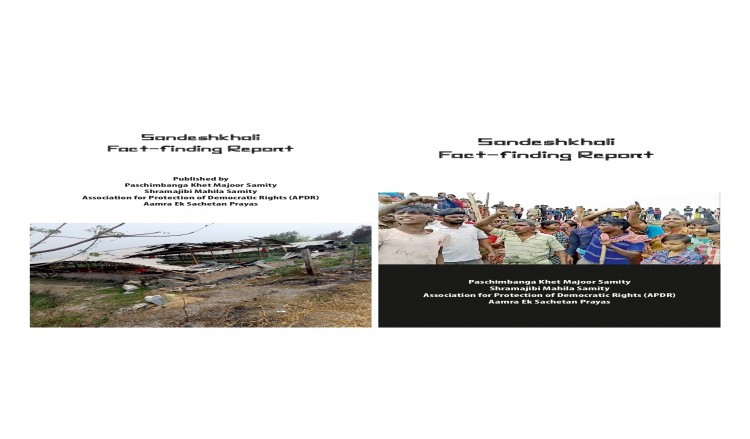
Sandeshkhali Fact-finding Report, 2024
In order to understand the nature of the Sandeshkhali... -

প্রসঙ্গঃ মুহাম্মদের কার্টুন এবং ইসলামি বিধান ও সংস্কৃতি
১৬ই অক্টোবর শুক্রবার... -
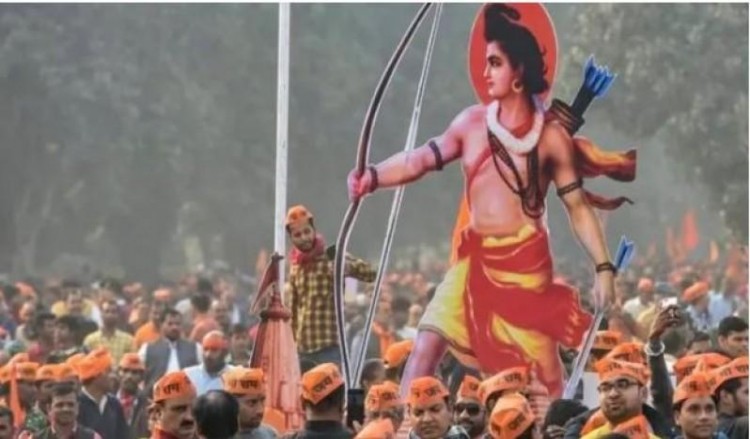
Fact Finding Report – Howrah and Rishra Communal Violence, 2023
Centre for study of Society and Secularism (CSSS), Mumbai... -
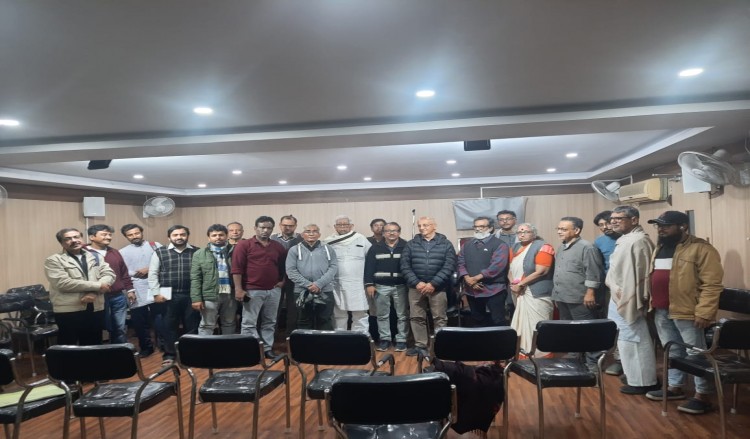
Discussion on plausible Agendas for the Lok Sabha Elections (2024) With Dr. Harsh Mandar, 23 January, 2024
Repealing all the Citizenship Amendment Acts and resuming...


